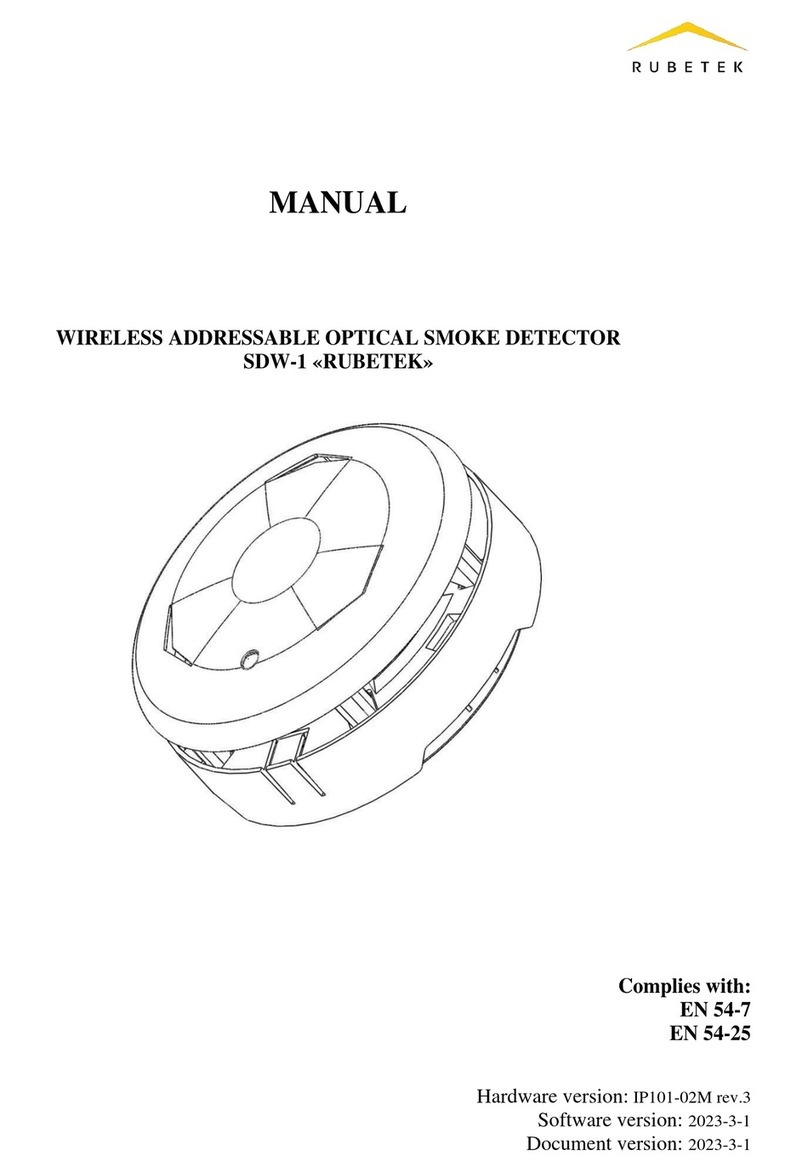2
Table of contents
Introduction..........................................................................................................................................3
1. Description and operation......................................................................................................4
1.1. Function.................................................................................................................................4
1.2. Technical data........................................................................................................................4
1.3. Appearance of the detector ....................................................................................................5
1.4. Internal design of the detector ...............................................................................................5
1.5. Complete set ..........................................................................................................................6
2. Intended use...........................................................................................................................6
2.1. Preparation for use.................................................................................................................6
2.2. Linking the detector to СP .....................................................................................................7
2.3. Detector deactivation...........................................................................................................10
2.4. Bypass mode........................................................................................................................11
2.5. Link quality assessment.......................................................................................................12
2.6. Detector location..................................................................................................................13
2.7. Installation ...........................................................................................................................13
2.8. Detector SW firmware check...............................................................................................15
2.9. Events and reactions configuration......................................................................................15
2.10. «Fire 2» confirmation alarm signal configuration...............................................................16
3. Maintenance.........................................................................................................................17
3.1. Safety precautions................................................................................................................17
3.2. Functional test......................................................................................................................17
3.3. Batteries replacement...........................................................................................................19
4. Storage.................................................................................................................................19
5. Transportation......................................................................................................................19
6. Disposal ...............................................................................................................................20
7. Manufacturer’s warranty......................................................................................................20
8. Claims..................................................................................................................................20
9. Certification.........................................................................................................................20
10. Manufacturer........................................................................................................................20





























